TRANSFORMATIONAL TRENDS IN URBAN LOGISTICS (GOODS)
"The future of urban logistics will be dominated by connected, shared, autonomous, and electric solutions."
Innovative solutions in logistics have transformed the way goods are transported and delivered. The industry is witnessing an influx of new solutions focused on unique value-added services, which are disrupting the overall supply chain ecosystem. The future of urban logistics will be dominated by connected, shared, autonomous, and electric solutions.
And deeply embedded in these trends will be emerging technologies such as IoT, Big Data, predictive analytics, cloud computing, crowdsourcing platforms and connected devices.
Transformational Shifts in Urban Logistics

Urban Distribution
Adoption of hub and spoke warehousing where smaller depots, stores and inner-city points are used to feed goods
10% to 15% savings in warehousing costs by using stores as warehouses and shipping directly from stores

Urban Regulatory Environment
City government mandates on vehicle access restrictions, carbon emissions and other financial measures such as congestion charges to curtail movement of vehicles in city areas
A minimum of 500 million deliveries per day will be made within cities by 2025
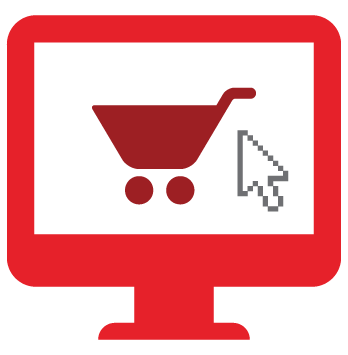
Booming Ecommerce
Growth in frequency of parcel movement owing to massive growth in online retail
20% growth in B2C parcels attributed to e-commerce orders alone
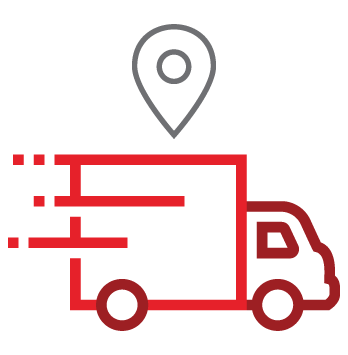
Connected Logistics
IoT is transforming the trucking industry by improving the traceability and controllability of in-transit freight
10% to 15% surge in profits due to IoT-powered trucking solutions
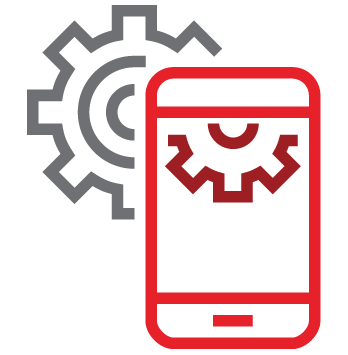
Shared Solutions
‘Appification’ and crowd-sourced platforms enabling on-the-go-type urban delivery solutions
15% savings in procuring logistics services by eliminating paper-based processes

Autonomous Logistics
Full autonomy of logistics fleets from mobile robot yards to autonomous ships
Semi-autonomous trucks will reach a penetration rate of 5% by 2030
Urbanisation and the Future of Urban Distribution
The development of Mega Cities, Mega Regions, and Mega Corridors around the world will drive new demand for logistics services within urban areas. Urbanisation will bring about a spatial expansion of global city boundaries that will extend the existing limits of city outskirts. Frost & Sullivan research shows that by 2025, there will be 35 Mega Cities, 21 Mega Regions and 21 Mega Corridors globally. Such an expansion will require unique customised city logistics solutions that are likely to open up avenues for smart and integrated logistics solutions and also create new trade routes and freight corridors.
The urbanisation scenario is set to impact all stakeholders. From a supplier’s standpoint, there will be more demand for trade with flows set to gravitate towards urban areas; cities will account for well over 50% of global consumption by 2025. This will force logistics providers to cater to smart, innovative fleet solutions as consumers are expected to be more demanding in terms of quick and scalable delivery solutions. The urban landscape will also require scalable IT infrastructure with more focus on cloud services, telematics, and vehicle-to-vehicle technologies that will allow providers to better manage load factors, improve fuel efficiency and deliver better economies of scale.
Urbanisation will also result in changes to delivery models with distribution transforming into a hub-and-spoke model. Major hubs will be supported by regional distribution centres that will allow logistics providers to expand coverage from current levels of 60%-70% to 100%. This will also allow trucks to operate at nearly full capacity. Some of today’s biggest challenges are load capacity and driver shortages. With new technology scenarios, services such as self-collection points and in-night services will result in trucks operating at 80%-100% load capacity. This will also result in a 50% reduction in trucks moving in and out of cities, thereby managing driver shortages as well as providing for more optimised, on-time delivery for retailers and consumers.
Urban Regulatory Environment
Rising congestion within city limits has resulted in increased levels of pollutants, including CO2. This has forced city authorities to deploy strict regulations that impact logistics providers in terms of how they operate. London, Berlin, Paris and Utrecht are some of the major European cities that have incorporated measures, including low emission zones (LEZs), loading/unloading zone time windows, urban consolidation centres and special lanes.
Freight transport has been one of the major sources of pollution. For instance, in London the problem was identified back in 2010 with freight transport responsible for about 38% of nitrogen oxide and about 40%- 50% of particulate matter 10 (PM10) emissions. Frequent start-stop driving and use of old delivery vehicles are among the major challenges. With the London LEZ, the city has seen a significant decr ease in road traffic pollution without incurring high economic costs. Restrictive time zones have also had an impact. In Berlin and London, local environmental laws encourage minimising freight traffic between 10:00 and 16:00.
Such regulatory controls are driving innovative business models such as click and collect and locker box solutions that increase convenience while allowing delivery firms to reduce transport miles. They are also a key driver of investment in new vehicle technologies to reduce emissions, IT tools for managing commercial fleets, and predictive asset management for operational efficiency and cost reduction.
Booming eCommerce
Meanwhile, eCommerce is growing fast and changing the way we acquire goods. As a result, the supply chain market is becoming more complex in a time-constrained environment as speed of delivery and user experience emerge as critical factors.
In fact, instant and same-day delivery solutions are now key service differentiators. Firms must rethink their strategies and devise more agile models that leverage economies of scale and still meet consumer demands. This spurs a shift from location-based deliveries made of fleet networks to ‘marketplace’ or ‘app-centric’, non-asset-based models.
Nearly 20% of retail in 2025 will happen via online channels globally. And when it comes to more mature digital retail markets such as the UK and US that are characterised by high per-capita online spending, over 25% of retail will be online.
Growth of these online channels will transform traditional retail models with the majority of retailers becoming a hybrid ‘bricks and clicks’ model in the future. Many of the major brick and mor tar stores are already transforming to become more connected and interactive by introducing hybrid models such as virtual stores. This will hugely impact urban logistics, especially for parcel deliveries. The future will see parcels becoming lighter, smaller and a lot more frequent with increasing average orders per week. End customers will also demand more visibility into inventory flows and multiple delivery options.
Connected Logistics
The move towards a more connected future of logistics is all about leveraging the key trends towards more connectivity and advanced data analytics. Frost & Sullivan research shows that data traffic per year is growing by roughly 40% annually and is projected to reach a colossal 100.2 ZB by 2020.
The logistics industry is no different and is being transformed by the same explosion in data. This raises prospects of logistics transforming into a data-centric industry where real-time information takes greater precedence over the actual ability to move cargo. The ability of firms to generate both structured and unstructured data onto the model allows them to make critical decisions pertaining to key logistics functions. Companies have a huge opportunity to use analytics to manage fleets effectively.
Incorporating analytics allows users to optimise routes and fuel usage, control emissions, as well as monitor operational efficiencies and driver performance. Analytics can also be used from the standpoint of predictive delivery, and we’ll increasingly see algorithms used to determine when and where the next potential order will be. This will allow firms to manage routes better from the point of load balances and excess capacities when it comes to truck deliveries.
Internet of Logistics and Trucks
“IoT is transforming the trucking industry by improving the traceability, controllability and
diagnostics of in-transit freight”
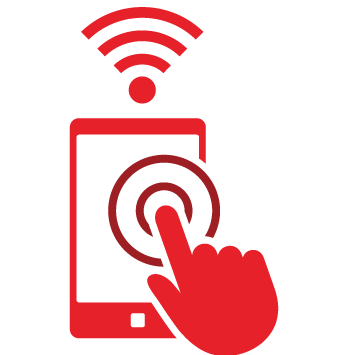

10% to 15% surge in profits due to IoT-powered trucking solutions
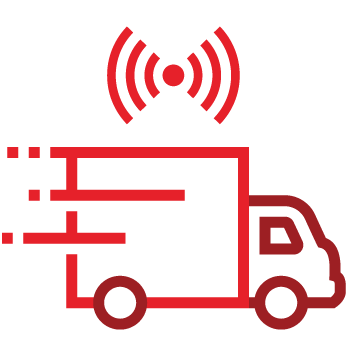
Legal Compliance with IoT:
Trucking companies can monitor and find out the gaps in statutory and regulatory requirements
Smart Driver Management:
Gather data on engine ignition, truck speed and brake wear
Dynamic Geo-fencing and Route Planning: Process real-time information on weather conditions, roadblocks, traffic congestion, etc., to plan a fuel-saving route
Self-vehicle Diagnostics:
IoT-based diagnostics system can use diagnosis algorithm to analyze a truck’s condition
Carbon Footprint:
Trucking companies now are creating sustainable emission–curbing projects and lowering the cost of resources spent on delivering same level of service
Theft Prevention:
Alert the trucking company of the door closed/open status
Shipping Sensitive Cargo: Automatically monitor and regulate the temperature inside refrigerating system of the truck
Shared Solutions
The evolving eCommerce market and seamlessly connected technologies will result in transport and logistics service providers delivering packages in real time. The leading innovators, as well as new start-ups, are driving innovative asset-less solutions through ‘appification’ and crowd-sourced platforms, which are critical for pervasive on-the-go-type urban delivery solutions. The ability of some of these innovators to bring the various stakeholders – retailers, consumers, service providers – under a common platform is expected to create tremendous value in terms of the economy of scale that such solutions are expected to generate.
Businesses can explore shared solutions from both a logistics and a manufacturing standpoint. They can collaborate around technology to provide on-demand deliveries when it comes to their last-mile logistics. For instance, we already see trends wherein major auto manufacturers are collaborating with on-demand firms for shared mobility solutions such as on-demand taxi services by 2020. This could well be extended for delivering goods within urban environments.
There will also be a collaboration between firms for resource-sharing technology that will allow for flexible sharing of production facilities or processes. With a growing online market, customers are becoming more demanding, resulting in a need for mass customisation. This has put the onus on manufacturing firms as there is now a need to satisfy diverse customer needs and provide timely solutions. The shared service model can deliver process efficiencies in production while also relieving the stress on supply chain and logistics functions.
Autonomous Logistics
Autonomous logistics will play an integral role in the future of deliveries, and this has already stirred up a debate around regulations and safety aspects of having such solutions, especially for last-mile urban deliveries.
Early testing has been done in closed environments, such as warehouses, with forklifts being made autonomous using vision-guided systems. They are not only expected to perform manual tasks but are also able to process orders and pick up and load deliveries four times quicker than humans. Many have subsequently been successfully tested for outdoor environments such as dockyards.
In the future, urban logistics could also have connected autonomous fleets. Concepts such as truck platooning and autonomous trucks are set to be functional within 10 years. Another area that is emerging is the use of autonomy for urban last-mile deliveries. While drones, at some stage, are expected to be widely used, the autonomous delivery robot (bot) solution is set to dominate urban deliveries. Lesser regulatory mandates, ease of functioning and lower costs of technology make delivery bots a more attractive proposition when compared to drones, specifically for deliveries within a five-mile radius.